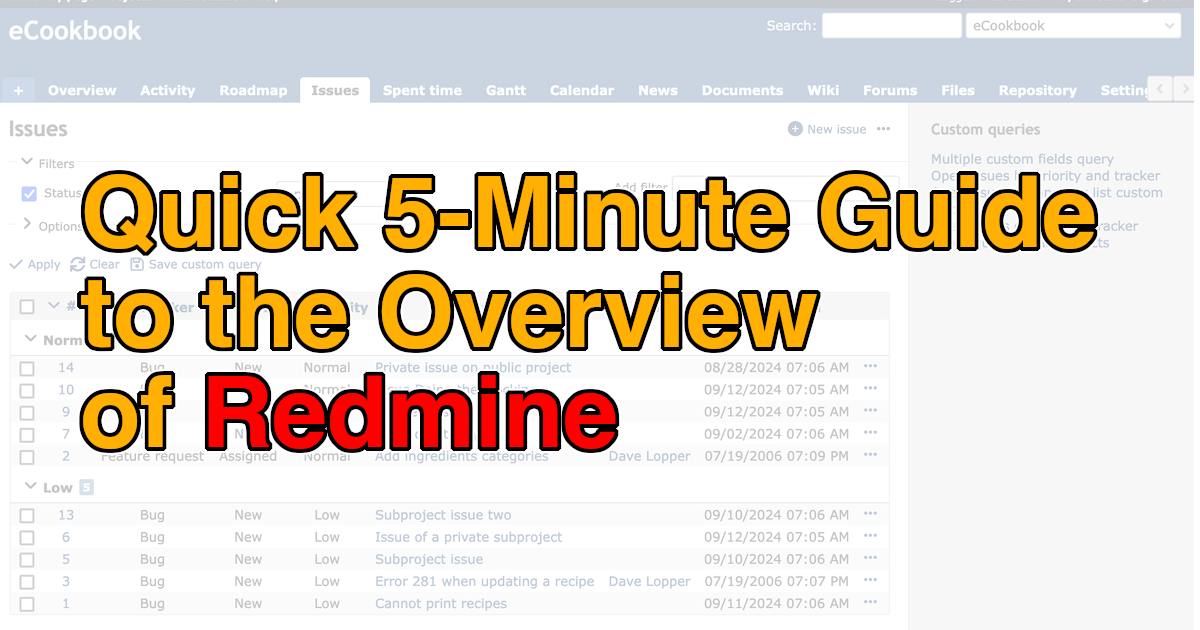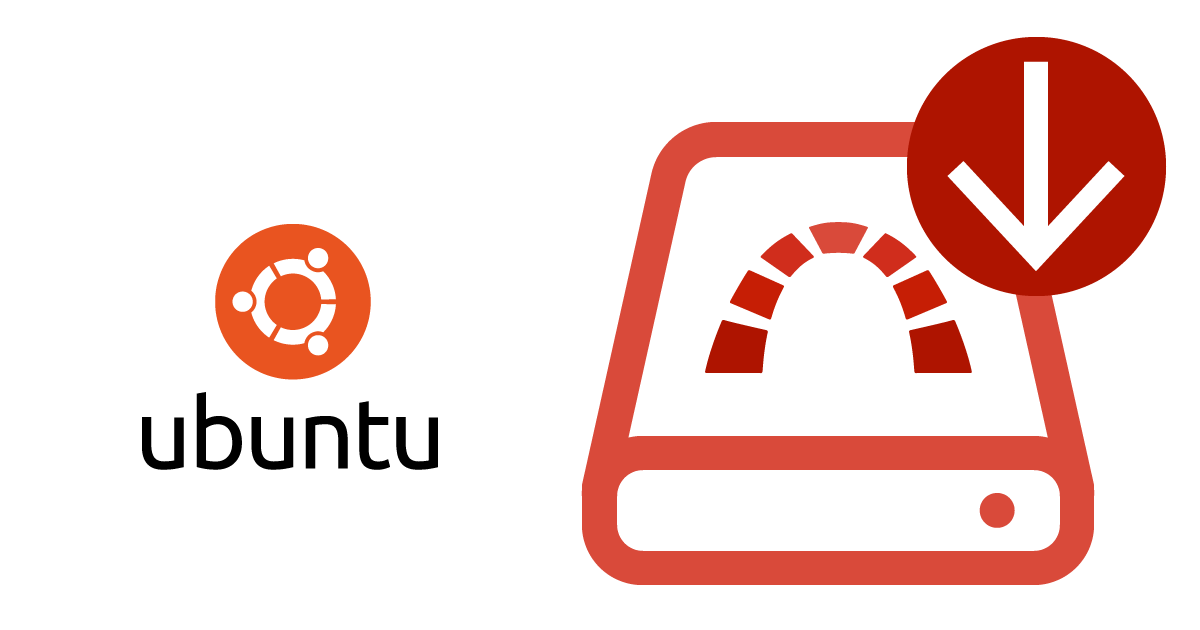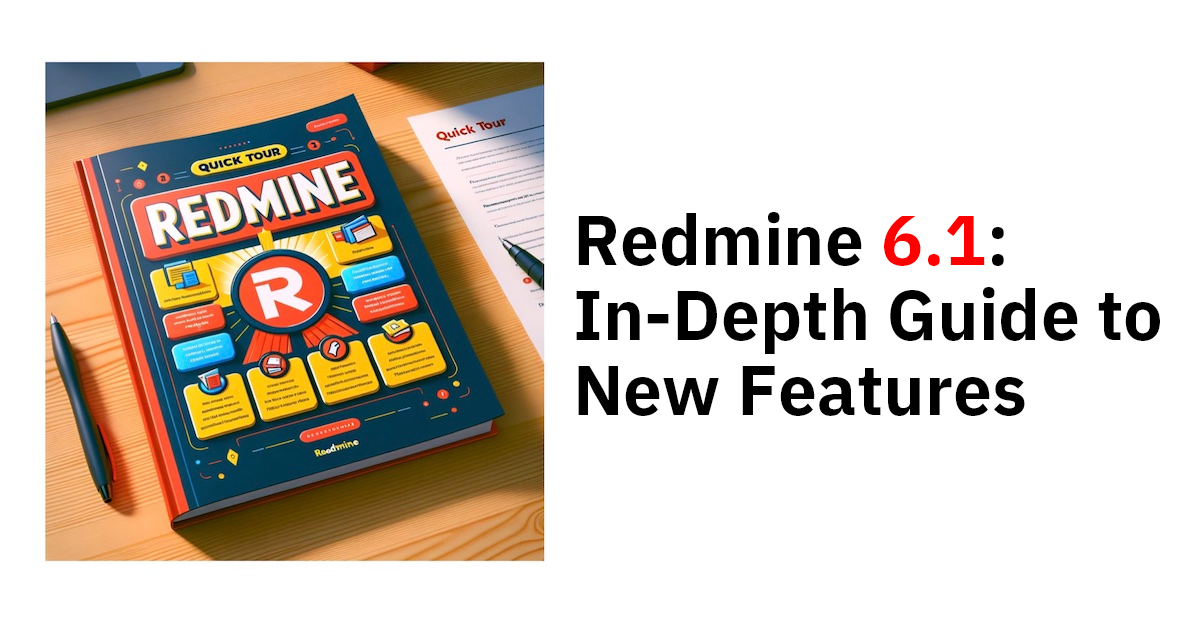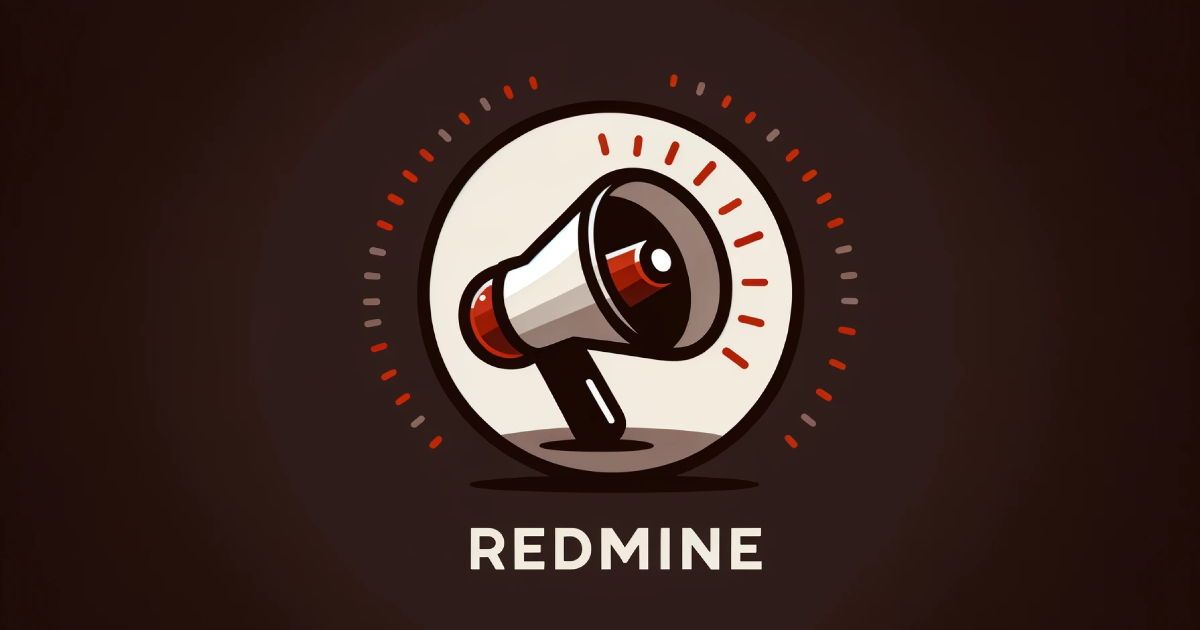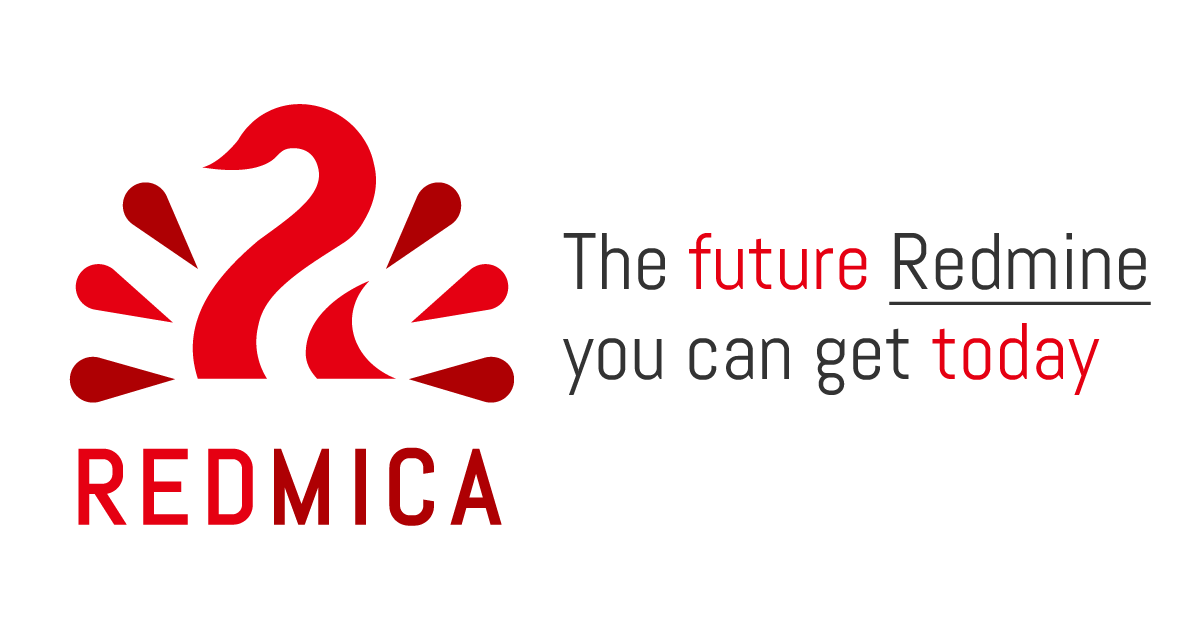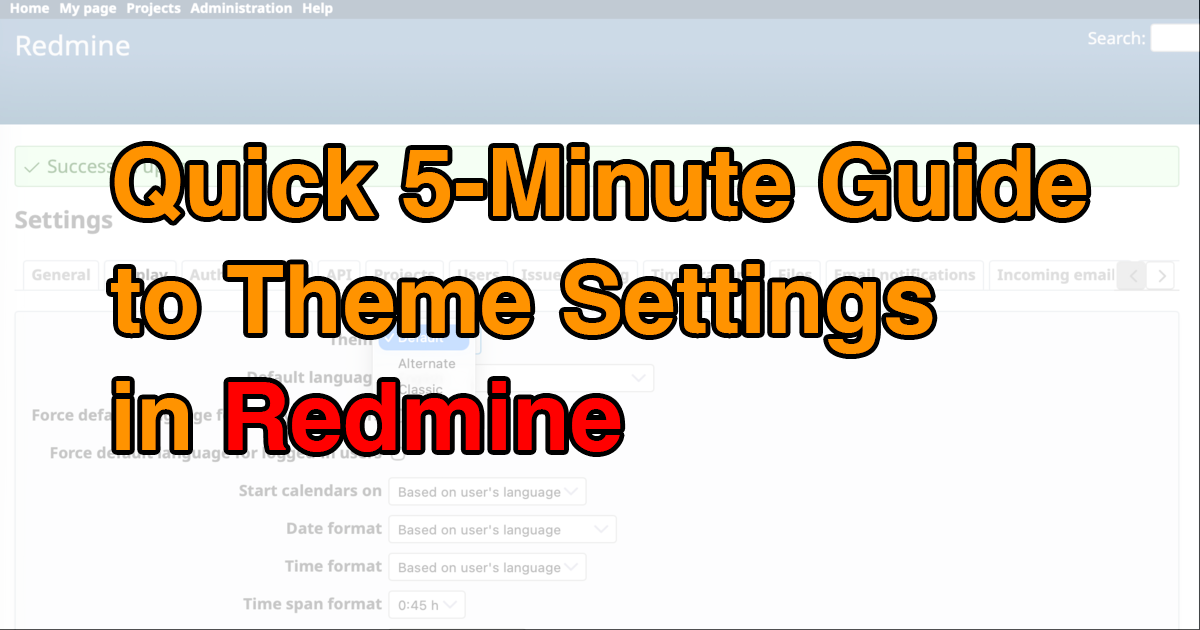Quick 5-Minute Guide to the Overview of Redmine
I will provide an easy-to-understand overview of the open source project management tool, Redmine.
Table of Contents
- What is Redmine?
- Main Features of Redmine
- Benefits of Using Redmine
- Use Cases for Redmine
- Redmine Resources
What is Redmine?
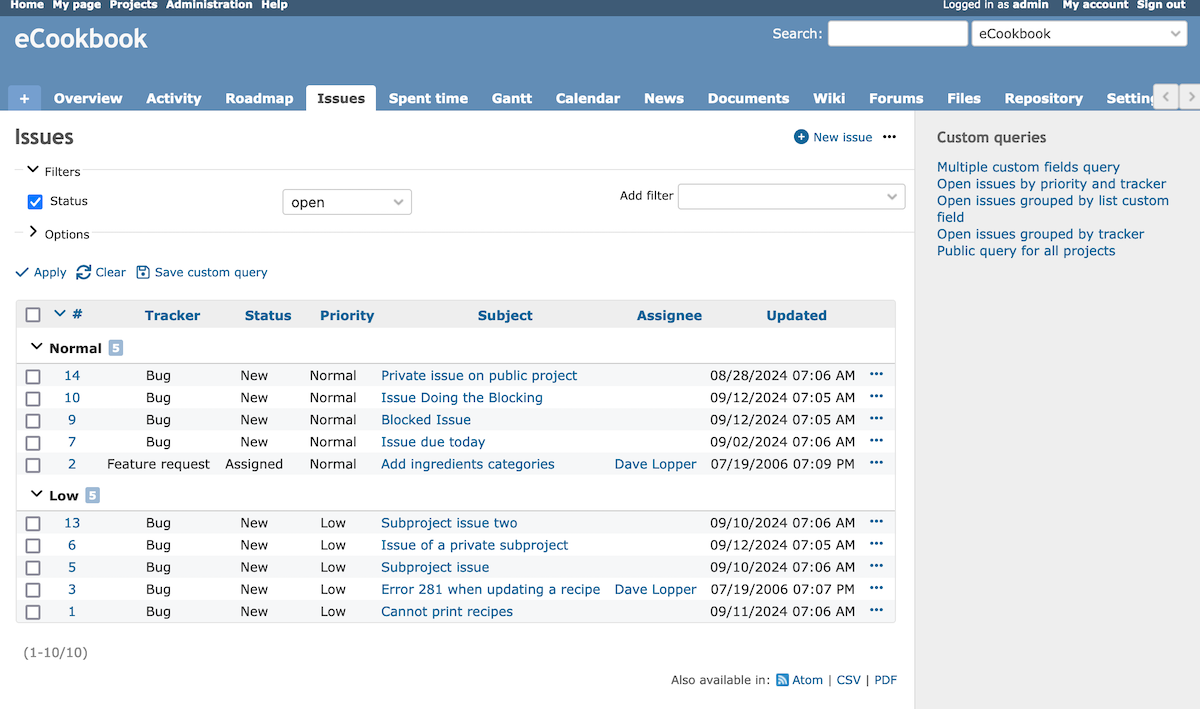
Redmine issue list screen
Redmine is an open source software designed to assist in project management, offering features for issue tracking and information sharing. Anyone can freely download, install, and use Redmine.
As Redmine operates as a web application, you can use it without installing additional software, as long as you have a browser and an environment where Redmine is running. Since all information is centralized, it can be accessed from anywhere and used by multiple members.
Redmine is highly compatible with software development projects and can be integrated with version control systems like Subversion and Git. Redmine itself is managed using Redmine, and it’s also used in other software projects.
Redmine isn’t just useful for software development. It can be applied to a wide range of business projects, event planning, day-to-day task management, customer support tracking, and internal workflow management.
In today’s work environment, efficiently managing tasks and team communication is essential. With the rise of remote work and collaboration between multiple teams, introducing the right tools can significantly improve the quality of work. Redmine is the ideal tool for such situations. If you're unsure about which tool to use or have hit a wall with managing tasks in spreadsheets, consider reading this page to explore the benefits of using Redmine.
Main Features of Redmine
Issue
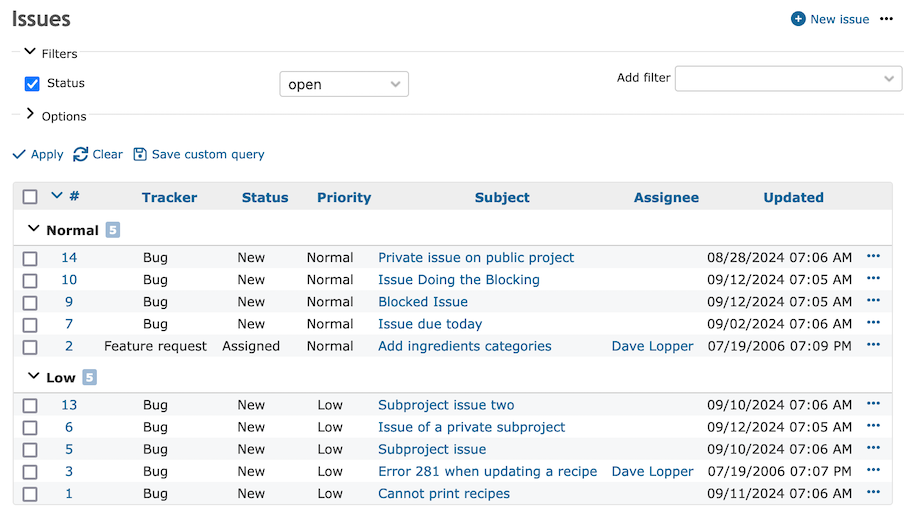
Issue
The core feature of Redmine is its issue tracking system, which uses "issue" to manage tasks and problems. You register tasks as issues, such as tasks, or bugs. As work progresses, you update the issue. Issues can be assigned to specific people and given due dates, making it easy to see who is responsible for what task and when it needs to be done.
Gantt Chart
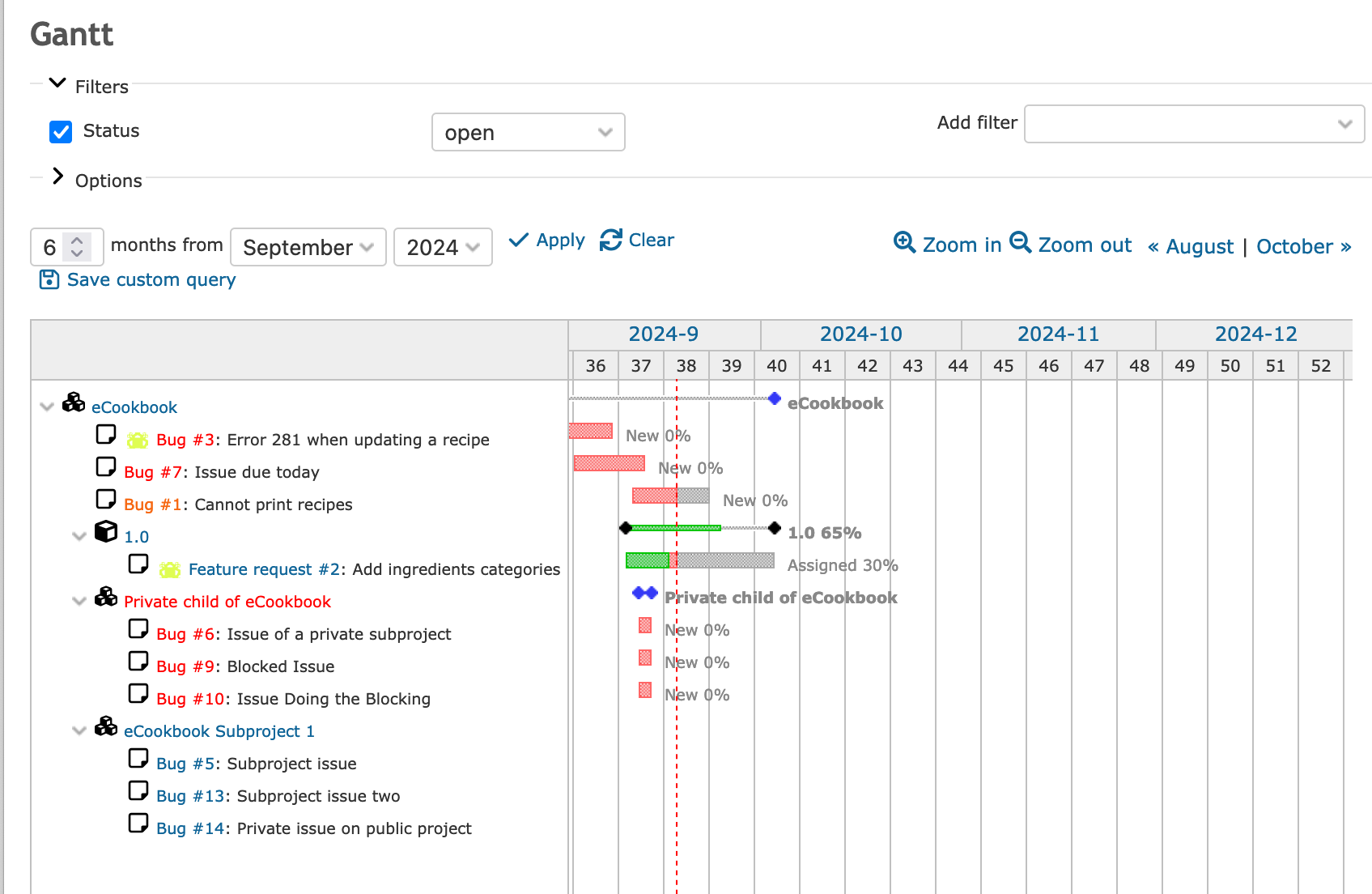
Gantt Chart
To manage a project, tasks are divided into smaller work units and organized visually to show the overall workflow and progress. This visual tool is called a Gantt chart. Redmine has built-in Gantt chart functionality. When you enter the start and due dates while registering a issue, the issue is automatically reflected in the Gantt chart, allowing you to easily see the order, schedule, and progress of tasks at a glance.
Wiki
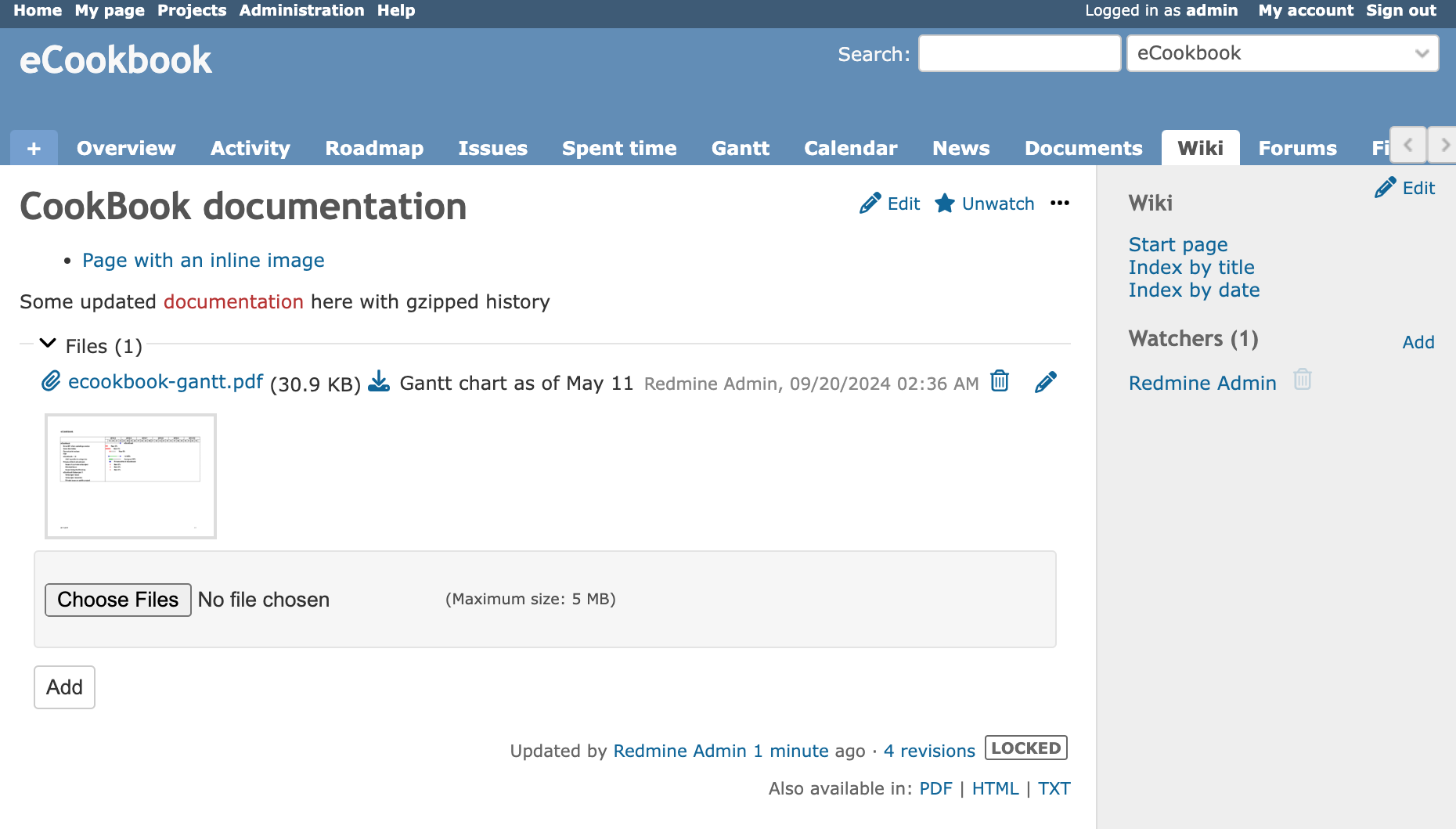
Wiki
The Wiki feature allows you to create and edit documents. You can create documents and notes for your project or organization, regardless of their purpose. It’s easy to create multiple pages and link them together. Since edit histories are saved, comparing and restoring previous versions is also simple.
Integration with Version Control Systems
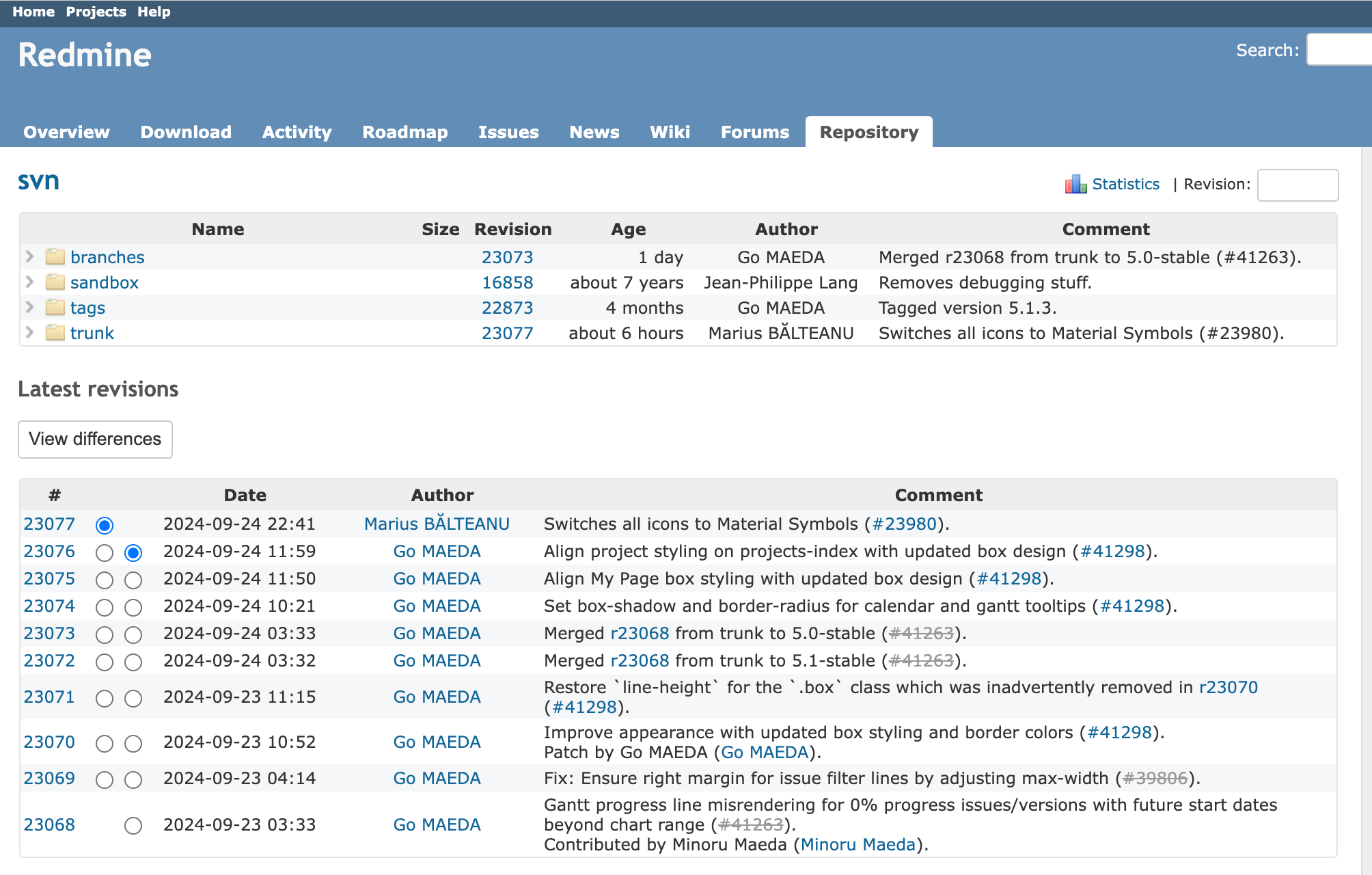
Redmine Official Repository
Redmine can integrate with version control systems such as Subversion and Git. You can view commit histories and file contents within the repository directly from Redmine’s interface. This is a convenient feature when managing software or system development projects.
Forum
The forum feature serves as a bulletin board where users can discuss topics, making it useful for team collaboration.
Benefits of Using Redmine
It's open source software, so you can use it freely.
You have the freedom to operate Redmine on-premises or in the cloud. As long as resources permit, there are no limits on the number of projects or members you can register.
Since it’s a web application, you can use it as long as you have a browser.
All information is centralized, allowing team members to update and view data from anywhere using a browser.
Issues become an asset.
By registering tasks as issues and recording the work performed, the information remains as an asset. If a similar task arises a year later, it may be hard to recall how you handled it, but with the issue available, you can easily check how the task was completed and proceed efficiently.
Even if the person in charge changes, the new person can refer to the issues left by their predecessor, making transitions smooth.
Use Cases for Redmine
Redmine has a wide range of features, and by combining them, it can be used for various tasks.
Project Management
Redmine offers many features needed for project management.
In large projects, it's common to divide the project into sub-projects. Redmine allows you to create sub-projects at any hierarchical level, enabling you to manage projects according to their size.
There is no limit to the number of members you can register in Redmine, so you can add as many team members as needed for each project.
As the number of members increases, controlling access to information may become necessary. Redmine allows you to fine-tune access permissions to control who can view certain information.
Task Management
Redmine can also be used for day-to-day task management. Since issues can be assigned due dates and priorities, just by looking at the list of issues, you can quickly see which tasks to tackle first.
Customer Query Management
Redmine can be used to manage customer support queries as well. By registering each inquiry as a issue, you can easily track which queries are unanswered or delayed.
Event Management
In projects for hosting events, tasks are often divided into phases like planning, preparation, and the event itself. Redmine allows you to create phases and link tasks to each phase, so even if there are many tasks, you can see a well-organized list and proceed without confusion.
Return to the "Quick 5-Minute Guide to Redmine" Article List
